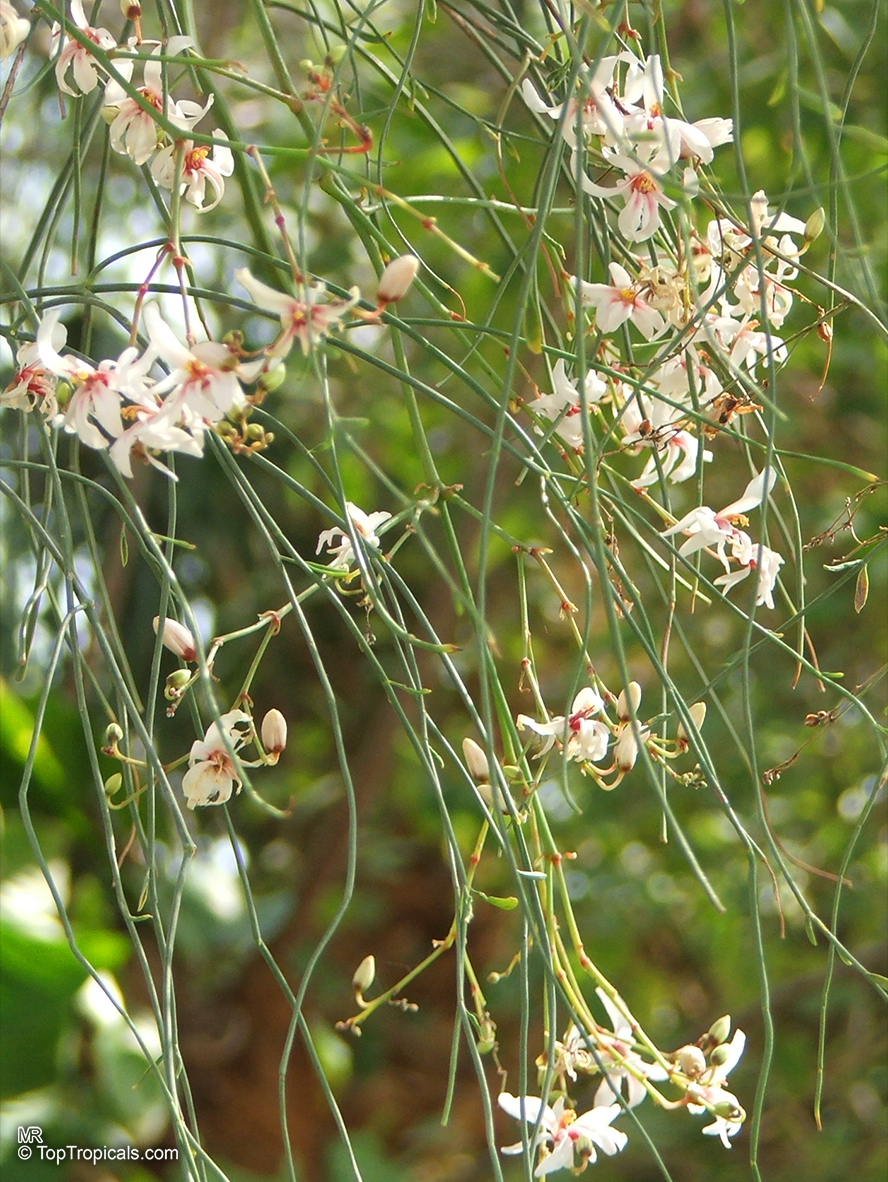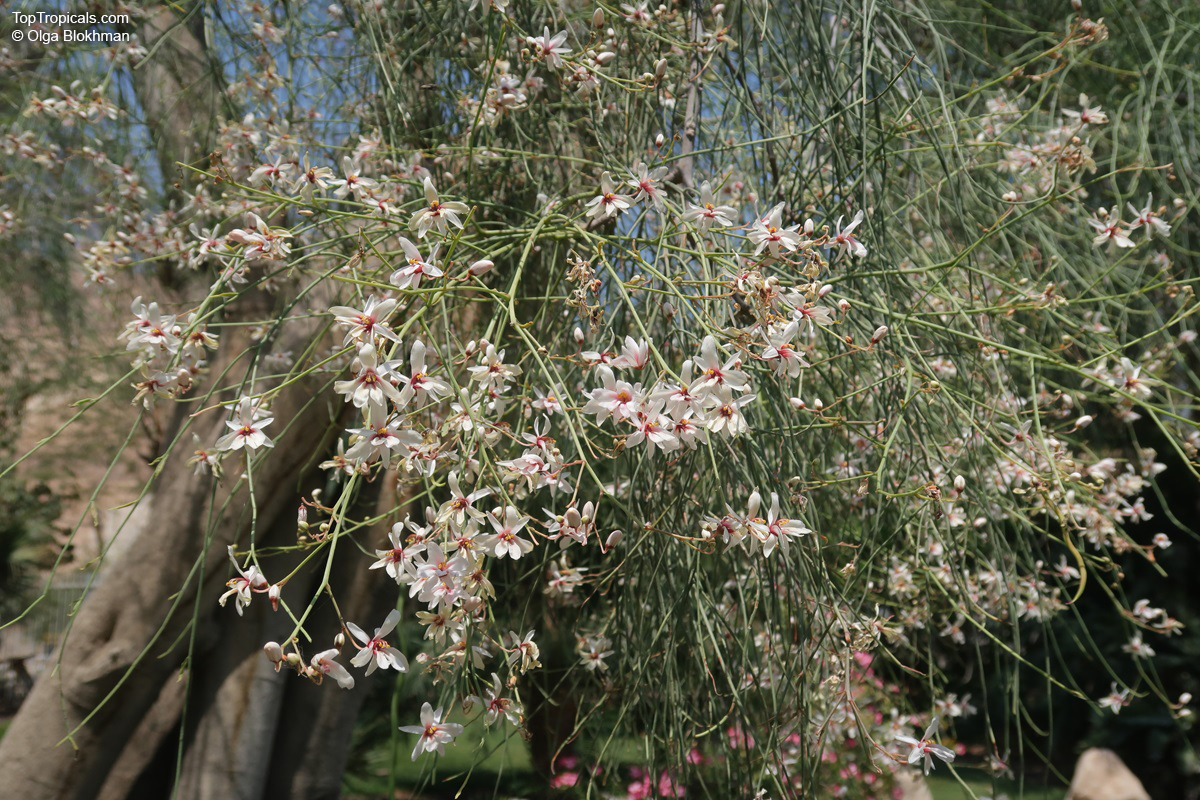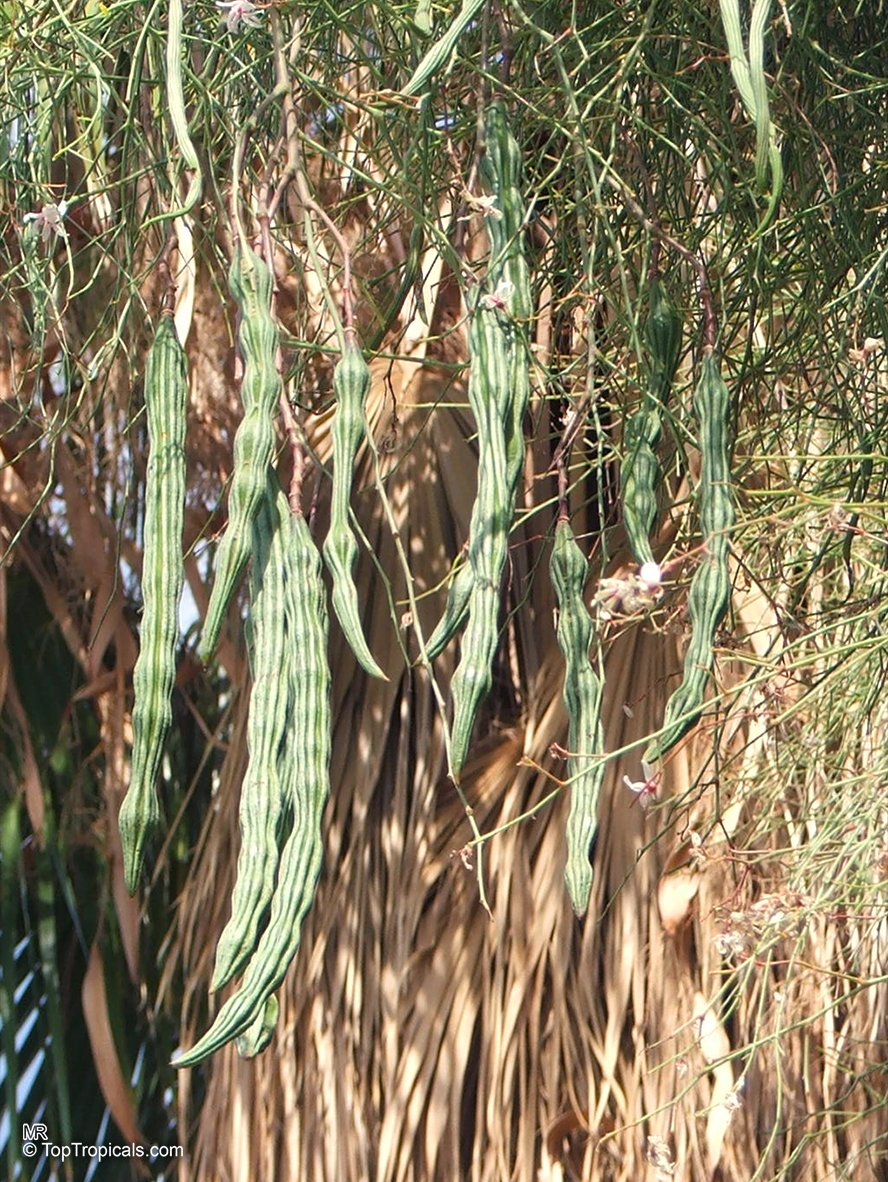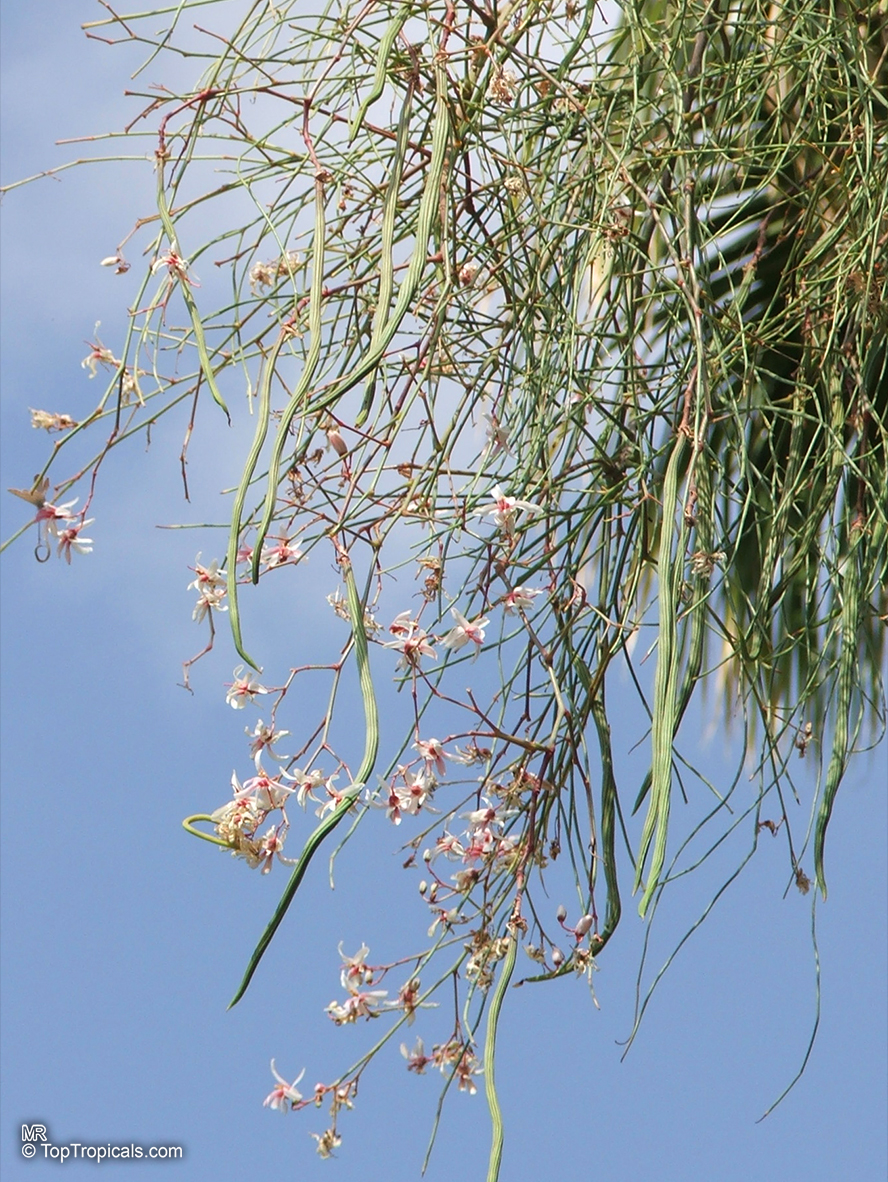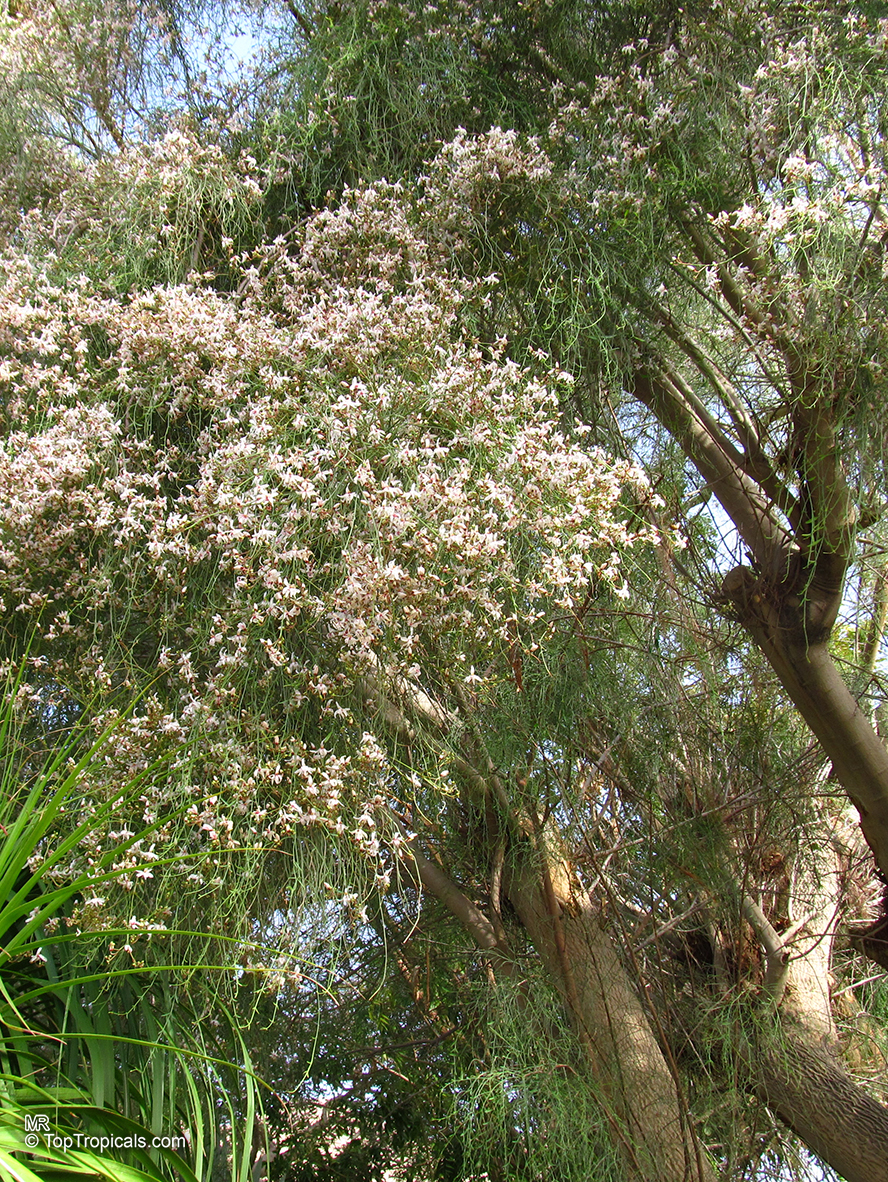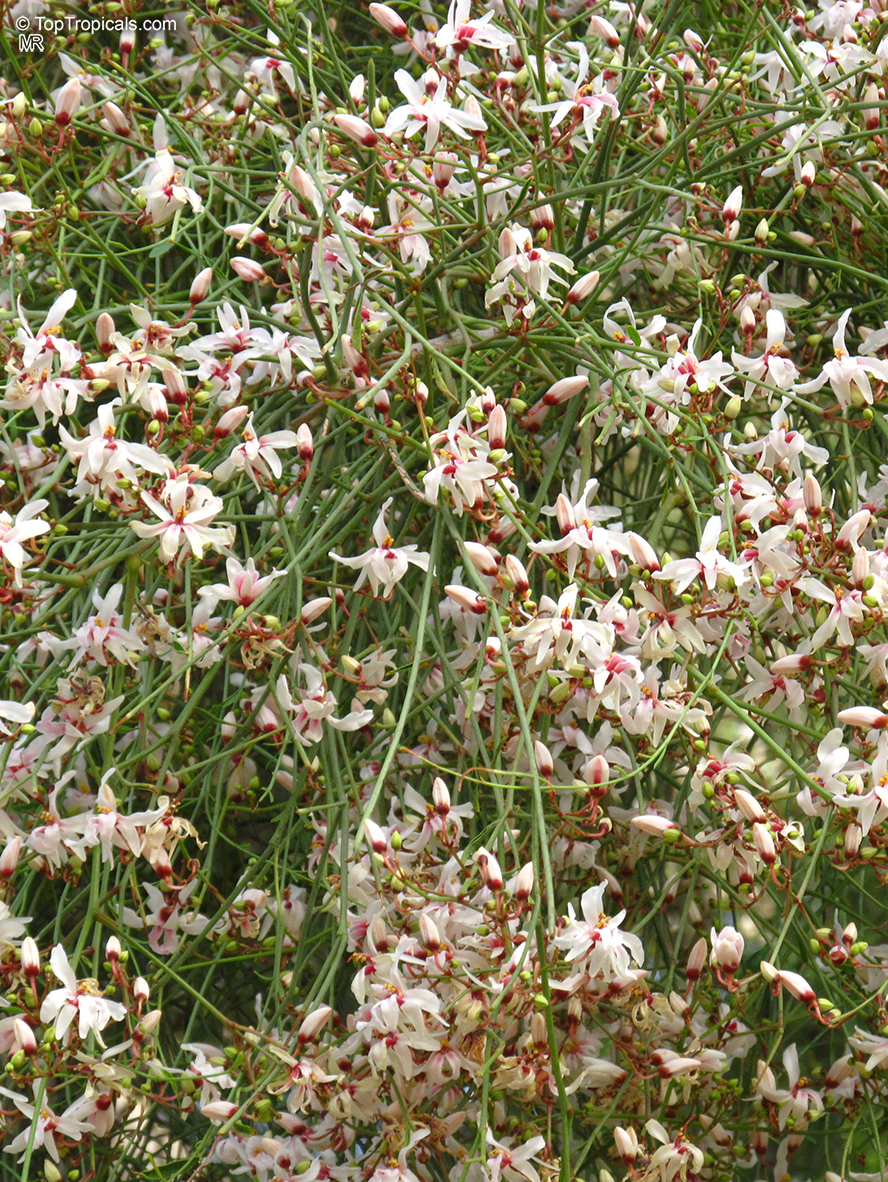Moringa peregrina (Drumstick tree)
Top Tropicals Plant Encyclopedia
Botanical name: Moringa peregrina
Common name: Drumstick tree
Family: Moringaceae
Origin: Arabia, Red Sea coasts








Moringa peregrina (Drumstick tree), native to the Red Sea region, is a unique and strange member of its group. It's an evergreen tree that grows to a height of over 20 feet with a spread almost as wide, requiring full sun and moderate water during the growing season. It's an ethnomedical plant, with edible young fruit and various parts that possess medicinal properties, including its oil. The tree produces three different types of fragrant blooms: pink, white, and off-white, which are followed by edible fruits rich in nutrients such as calcium, iron, vitamins A and C, and potassium. In a single growing season, Moringa peregrina can produce many of these nutritious fruits, known for their health benefits.
In colder climates, Moringa peregrina can be grown in a pot and must be brought indoors during winter for protection. It needs well-drained soil, regular watering, and fertilizer to thrive, but the watering should be reduced in the autumn, and no fertilizer should be added. A layer of mulch added to the soil will help preserve moisture and protect the roots from extreme temperature changes.
The plant starts as a seedling with broad leaflets and a large tuber, but through multiple dry seasons, the shoot dies back below ground to the tuber. As it matures, the leaves become longer and the leaflets become smaller and more widely spaced, eventually giving the tree a wispy appearance similar to Tamarix . The naked leaf axis remains, creating a distinct look. T
